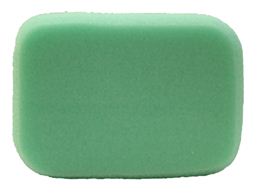This is a very vague question, but a very common one. Of course there are many different tile cutters available and the price range varies as much as their size and shape. Choosing the right tile cutter depends on many things; are you looking for a professional model, or DIY? Is it for a one-off job or do you intend to undertake several projects over the next few years? What are you cutting, small ‘standard’ wall tiles or large format, hard and brittle porcelain floor tiles? And so on.Like so many things in life, with tile cutters, you get what you pay for and another phrase comes to mind: ‘horses for courses’. There are three broad types of tile cutter:
1. Hand scribers and breakers
2. Manual Tile Cutters (scribe and snap)
3. Wet Cutters
The first type look like a pencil and are really just tungsten-carbide tipped steel (or increasingly, plastic) bars, or they may have a TC cutting wheel (like a basic glass cutter) and really all they can do is scribe a line in glazed and unglazed tiles. These are readily available in tile and DIY shops and are inexpensive. To be honest, unless you are simply fixing some small, thin basic wall tiles, then you will not get far with one of these as after scribing the line, you then need to break the tile along the scribe and anything over 7 or 8 mm can be quite tricky to the untrained. Don’t bother with placing the tile over matchsticks, it is far easier to simply hold the tile at arms length and place you thumbs on the back of the tile and ‘snap’ it away from you (like a certain, chocolate, twin-biscuit bar that you may enjoy when taking a break).
Thin cuts, of say less than 2 cm can be harder with this method as there is not much leverage available to the fingers. Another popular DIY tile cutter, resembles a pair of pliers with a winged-anvil at the end. This anvil can be used instead of the hands and can handle most basic tile-cuts.
However, if your project is going to involve more than just a kitchen splash back then you may well be better investing a little bit of money to get something more substantial. I should also point out, that these ‘pencil’ and ‘pliers’ cutters cannot help with cut-outs for switch sockets, ‘L’ shapes and the like.
You could consider a manual scribe & snap type cutter. Typically these have either two rails or one central bar, along which a scribing handle is pulled, or pushed. There are a variety of breaking devices and anvils, some built into the handle, others use a secondary device. There are many to choose from with prices starting from around as little as £10 (for a small, plastic one) up to several hundreds of pounds for a metal, professional quality one, capable of cutting very large floor tiles. If your budget is sub £50, (and your tiles are not too large) then you will find a wide selection of these machines in any large DIY store or tile shop.
With the trend today to tile ever-larger areas, particularly so in stone, and also the growing tendency for these tiles to be in a larger format, then it may well be well be worth looking at something more professional. Again, there are many to choose from; ask any professional Tiler and most will be familiar with the following two brands: Rubi and Sigma. Typically they will favour one and not the other – I am happy using either but that is because I have experience of using them both and of having to swap and change regularly, with many people their preference comes from which ever machine they were brought up on, and got used to. They have slightly different methods of operation; let’s take a look at a couple of them:
Rubi Manual Tile Cutters
The Rubi TS 40 is one of the best-selling manual cutters in the country, its design has not changed much over the last 25 years, but it works as well today as it always has. It can take tiles up to 40 cm in length and is operated by pushing a scribing wheel, by means of a long handle along twin chrome rails. Once scribed, the operator lifts the scribing wheel clear and uses the second lever to operate the breaking anvil
Sigma Manual Tile Cutters
The Sigma cutters by contrast, operate by pulling the scribing handle towards you and then changing the position of the handle, to bring the integrated anvils into play. The anvil presses down and the sprung plates give way to reveal a central breaking bar, over which the tile snaps.
Either of these two machines will handle a wide variety of jobs, if I had to make a choice between them then it would probably be the sigma, but much of this is my personal preference for ‘pulling’ and not ‘pushing’. If the sigma style appeals but it is out of your budget, then there are a number of ‘clones’ on the market that offer much of the same performance at a lesser cost. One of the best of these would be the Raimo by Raimondi:
Raimondi Manual Tile Cutters
Well, that post was a little longer than I had intended, and I have not even started on ‘L’ shape and hole cutting, for that we need wet cutters, I will leave that for next time. Stay Tuned.
Copyright Ian Taylor and The Tile and Stone Blog.co.uk, 2013. See copyright notice above.


Reader’s Comments